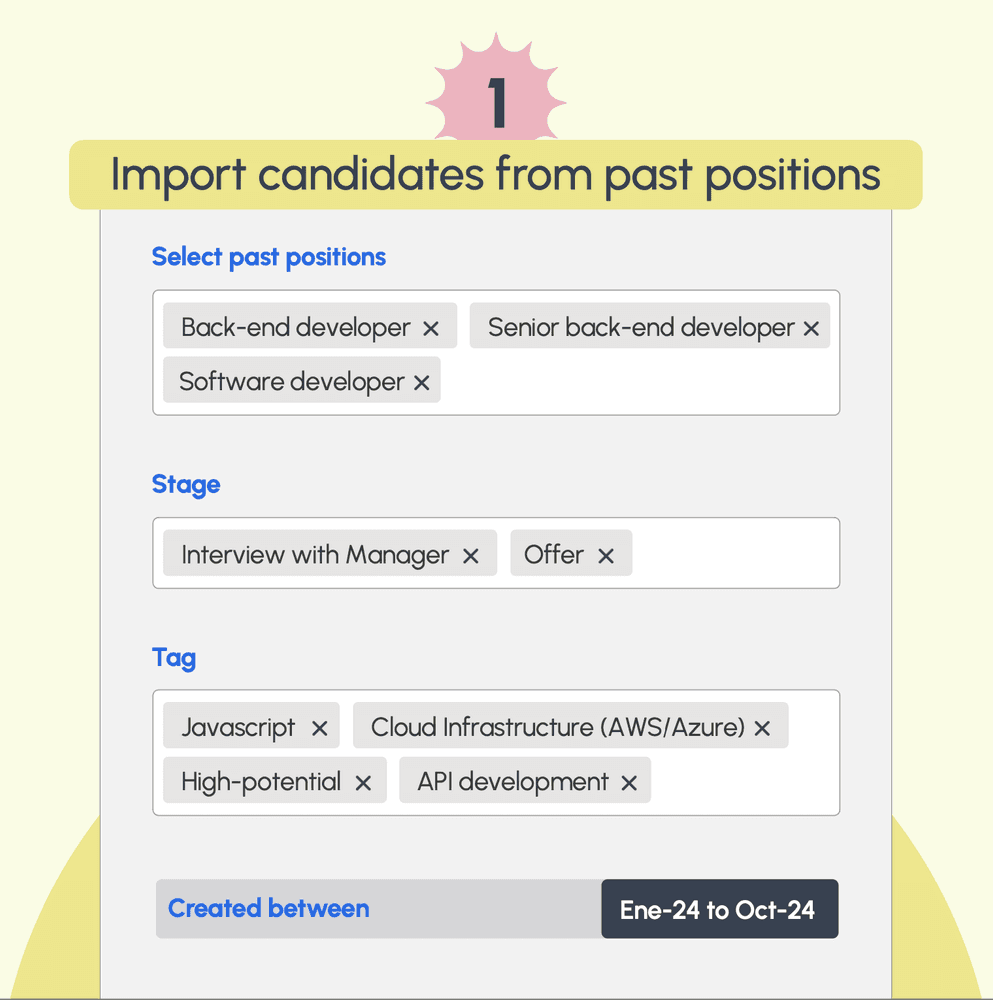Introduction
In today’s fast-paced recruitment world, maximizing your existing resources is essential for staying ahead. One often-overlooked asset? The database of candidates who applied for previous roles. Imagine having a pool of candidates who have already been screened, interviewed, or even extended offers—candidates who know your company and are more likely to respond when contacted again. Brainner not only helps analyze inbound applications with AI but now also allows you to rediscover past candidates with the same precision and efficiency.
However, most ATS systems rely on simple keyword matching, which limits their effectiveness. With Brainner’s advanced semantic search, you can go beyond rigid keyword requirements to match candidates by context and relevance, making your past applicant data work for you in powerful new ways.
Why Revisit Past Candidates?
For many talent acquisition teams, the large database of previously vetted candidates remains largely untapped. But these candidates bring key advantages:
- Higher Engagement: Since they’re already familiar with your company, past applicants are more likely to respond.
- Faster Hiring: Engaging these candidates before even posting a job helps to significantly reduce time-to-hire.
- Better Fit: These candidates have already shown interest and alignment, giving you a head start.
Reaching out to candidates from your database isn’t just about filling roles faster—it’s about making the most of valuable connections you’ve already invested time in building.
Three Simple Steps to Rediscover Candidates with Brainner
Brainner makes it easy to search and prioritize past candidates with these three simple steps:
1- Import Candidates
Brainner seamlessly imports candidates from your ATS, allowing you to bring in applicants from similar past roles. You can further filter candidates by:
- Stage: See how far they advanced in previous hiring processes (e.g., hiring manager interview or offer stage).
- Tags: Retrieve candidates with specific skills or high-potential indicators from past applications.
- Date: Filter candidates based on when they last applied, keeping your pool up-to-date.

2- Define Screening Criteria
Once candidates are imported, you can set specific criteria for the role, including work experience, skills, education, and other relevant qualifications. By defining these parameters, you’re instructing Brainner’s AI to identify candidates who best match the job’s needs.

3- Analyze Results
Brainner’s AI-driven semantic search reviews each candidate’s resume based on the criteria you’ve set, going beyond simple keyword matches. This ensures that the candidates flagged for review truly align with the job requirements, allowing your team to focus on top matches from the start.

Brainner’s Powerful Semantic Search: Going Beyond Keywords
Traditional ATS filters often rely on basic keyword matching, which can be limiting and prone to overlooking qualified candidates. If a candidate doesn’t use the exact keywords, they may not appear in your search results. Brainner’s semantic search eliminates this problem by understanding the context of your criteria, recognizing relevant skills and experiences even if they’re not worded exactly as you specified. This approach brings deeper insights and higher accuracy to your rediscovery efforts, transforming your database into a valuable, easy-to-navigate talent pool.
Real Benefits: Faster, More Targeted Hiring
Leveraging Brainner’s AI-powered resume screening for past candidates not only reduces the time needed to source well-matched candidates but also strengthens your talent pool. By filtering through candidates who already meet the job requirements, Brainner ensures that your team focuses on top-quality talent without getting bogged down in irrelevant applications. And with the three-step process, it’s quick and efficient to screen and prioritize resumes in minutes.
Don’t Let Pre-Vetted Talent Go to Waste
Brainner makes it simple to re-engage with top candidates who have already been through the recruitment process. By turning your past candidate data into a source of future hires, you’re not just filling positions—you’re building a smarter, more agile talent pipeline.
Ready to maximize your ATS database?
Save up to 40 hours per month
HR professionals using Brainner to screen candidates are saving up to five days on manual resume reviews.

